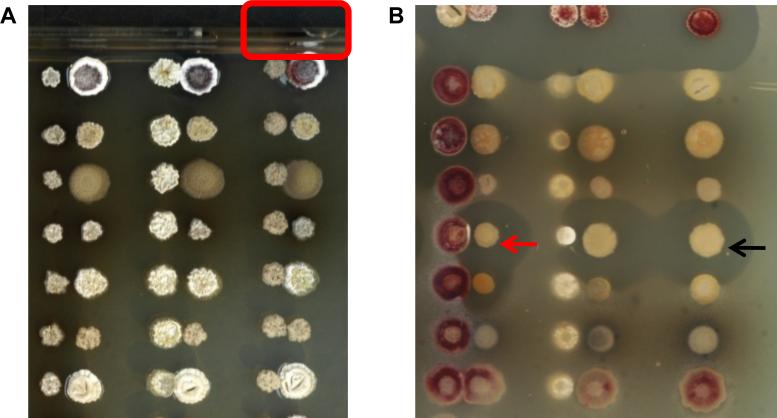Figure 2.
Binary actinomycete interaction assays. (A) Shown are binary interactions of Streptomyces tendae (left column), Streptomyces albus (middle column), and Amycolatopsis sp. AA4 (right column) with eight actinomycete strains. The interaction between S. coelicolor and AA4, chosen for further study, is outlined at the top. (B) Binary actinomycete assays are overlaid with S. aureus to detect anti-Staphylococcal compounds that are produced as a function of co-culture. The black arrow points to a colony that does not generate an anti-Staphylococcal compound in isolation. In co-culture with another actinomycete, however, a halo in the overlaid S. aureus lawn is observed (red arrow), indicating production of an antibiotic.

